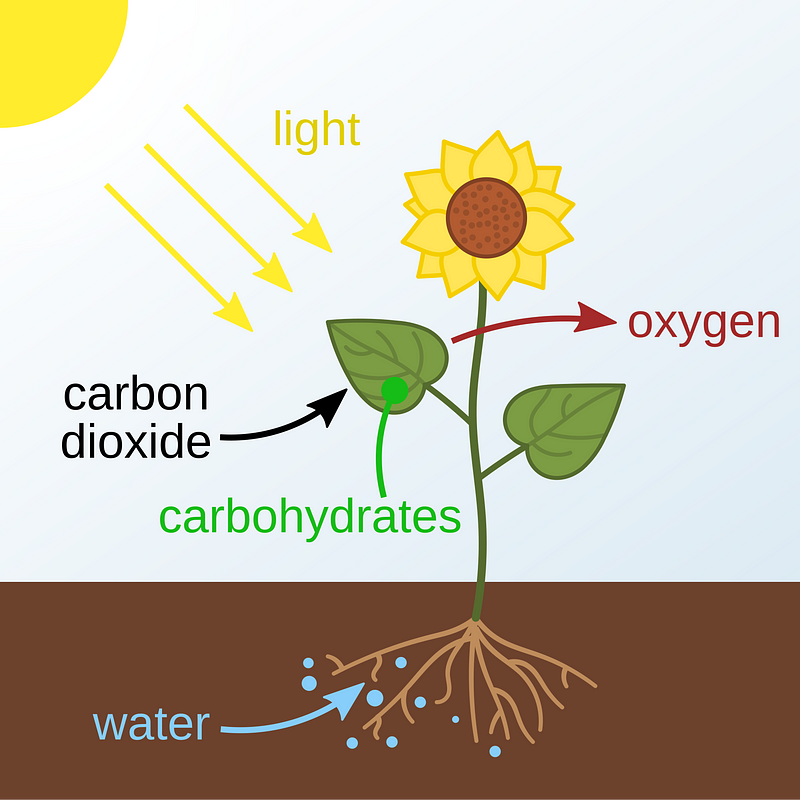The Journey of Oxygen: From Early Earth to Today’s Atmosphere
Written on
The Evolution of Earth's Atmosphere
Take a moment to inhale deeply. The air around us is vital for our existence and consists of approximately 78% nitrogen, 21% oxygen, 0.9% argon, and 0.05% carbon dioxide, along with trace amounts of other gases. Humans have adapted to thrive with this specific blend. Minor fluctuations—such as changes in elevation or humidity—are manageable, but significant alterations in this balance could be detrimental to our survival.
However, the atmosphere of our planet has not always been as it is today. Around 4.5 billion years ago, Earth formed from a swirling mass of dust, and its early atmosphere was predominantly composed of methane and ammonia. These gases, which are also found in the atmospheres of gas giants like Saturn and Jupiter, are toxic and inhospitable to most forms of life. Breathing such an atmosphere would lead to immediate death.
As the solid crust of the Earth began to form, temperatures gradually decreased, causing water vapor to condense and rain down, leading to the creation of oceans. During this time, the planet was largely water-covered. The tectonic plates began to shift, resulting in intense volcanic activity. This volcanic outpouring, combined with asteroid impacts, significantly altered the early atmosphere. The levels of methane and ammonia decreased, while carbon dioxide and nitrogen became more prevalent. But one crucial element was still missing: oxygen.
The Transformation of Early Life
The atmospheric changes were driven by massive collisions and volcanic activity, which introduced new elements and reshaped the environment. This created a nutrient-rich ocean with a stable temperature, ideal for the emergence of life. It is believed that life first arose approximately 3.7 billion years ago. Initially, these life forms were simple and did not rely on oxygen, known as anaerobic organisms, which still exist in isolated niches today. Over time, these organisms became more complex, leading to the evolution of photosynthetic species.

While we often associate photosynthesis with plants, various microorganisms also utilize this process for energy. The conditions on early Earth, characterized by an abundance of carbon dioxide, favored organisms that could harness this gas for energy. The first photosynthetic organisms are thought to be cyanobacteria, which emerged around 3.5 billion years ago.
The Role of Cyanobacteria
Cyanobacteria remain one of the most successful groups of organisms to date. Their presence is evidenced by unique geological formations known as stromatolites. As these microorganisms thrived and perished, they produced sticky substances that bonded with rocks and sand, forming larger structures over time. Stromatolites provide a record of cyanobacterial existence, with some dating back 3.5 billion years, such as the fossilized stromatolite found in Western Australia.

The success of cyanobacteria had profound global implications, leading to one of the largest mass extinction events known as the Great Oxidation Event. As oxygen levels rose, many existing organisms struggled to adapt, treating oxygen as a toxin, resulting in their rapid extinction. This atmospheric shift had far-reaching effects; oxygen displaced much of the methane and carbon dioxide, leading to a significant cooling of the planet and potentially triggering an ice age. Additionally, some of the oxygen transformed into ozone, which acts as a protective barrier against harmful UV radiation, allowing life to flourish without the constant threat of radiation damage.
The Impact on Human History
The rise in atmospheric oxygen was also pivotal for the advancement of life forms. As oxygen levels increased, organisms began to exploit this resource, with early eukaryotes evolving to use oxygen in respiration, converting it back into carbon dioxide. Humans trace their lineage back to these early organisms, and without this critical transformation in Earth’s atmosphere, our species may never have emerged.
The first video titled "Where does all our oxygen come from?" provides insights into the origins of Earth's oxygen and the role of cyanobacteria in shaping our atmosphere.
The second video, "WHERE DOES THE OXYGEN WE BREATHE COME FROM? || SCIENCE VIDEO FOR KIDS," offers a simplified explanation suitable for younger audiences about the sources of our oxygen.
Continuing Your Exploration
I hope this overview has been enlightening! If you're eager to learn more, I recommend the book "The Ends of the World," which delves into the history of mass extinction events and offers a fascinating perspective on evolutionary history. For more information, Wikipedia has excellent articles on the history of our planet, including the "History of Earth." Additionally, numerous informative YouTube videos explore the evolution of Earth's atmosphere further!
You may want to follow me for more stories like this or subscribe to my email list! I publish weekly about math and science.
Published in Fossils et al. Follow to learn more about Paleontology.